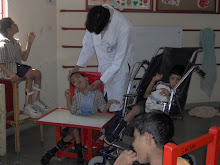The development of IE is the net result of the complex interaction between the bloodstream pathogen with matrix molecules and platelets at sites of endocardial cell damage. In addition, many of the clinical manifestations of IE emanate from the host’s immune response to the infecting microorganism. The following sequence of events is thought to result in IE: formation of nonbacterial thrombotic endocarditis (NBTE) on the surface of a cardiac valve or elsewhere that endothelial damage occurs, bacteremia, adherence of the bacteria in the bloodstream to NBTE and proliferation of bacteria within a vegetation.

Formation of NBTE. Turbulent blood flow produced by certain types of congenital or acquired heart disease, such as flow from a high-to a low-pressure chamber or across a narrowed orifice, traumatizes the endothelium. This creates a predisposition for deposition of platelets and fibrin on the surface of the endothelium, which results in NBTE. Invasion of the bloodstream with a microbial species that has the pathogenic potential to colonize this site can then result in IE.

The conventional arguement has therefore been that any dental procedure would result in a transient bacteremia that would then trigger the formation of a vegetative thrombus in an individual who had a succeptible endothelium. Thus all invasive dental procedures carried out in succeptible individuals would require a prophylactic antibiotic regimen to avoid transient bacteremia.
The case against Prohylaxis
The primary case against prophylaxis has been one of effectiveness. It has been pointed out that no antibiotic can guarentee complete freedom from bacteremia and furthermore the chances of bacteremia from daily activities is far greater than many dental procedures
from Pallasch et al 2005
The findings shown above greatly questioned the traditional view of the AHA, in 1997 the AHA for the first time admitted that the chances of bacteremia from daily oral hygiene procedures was as high as that of certain dental procedures. Keeping this in mind the AHA in 2007 revised their prophylactic regimen for dental procedures.
This however does not mean that prophylaxis is not required. It only reduced the individuals who required prophylaxis and eliminated a few procedures for which prophylaxis was required.
The reasons for change and changes made










No comments:
Post a Comment